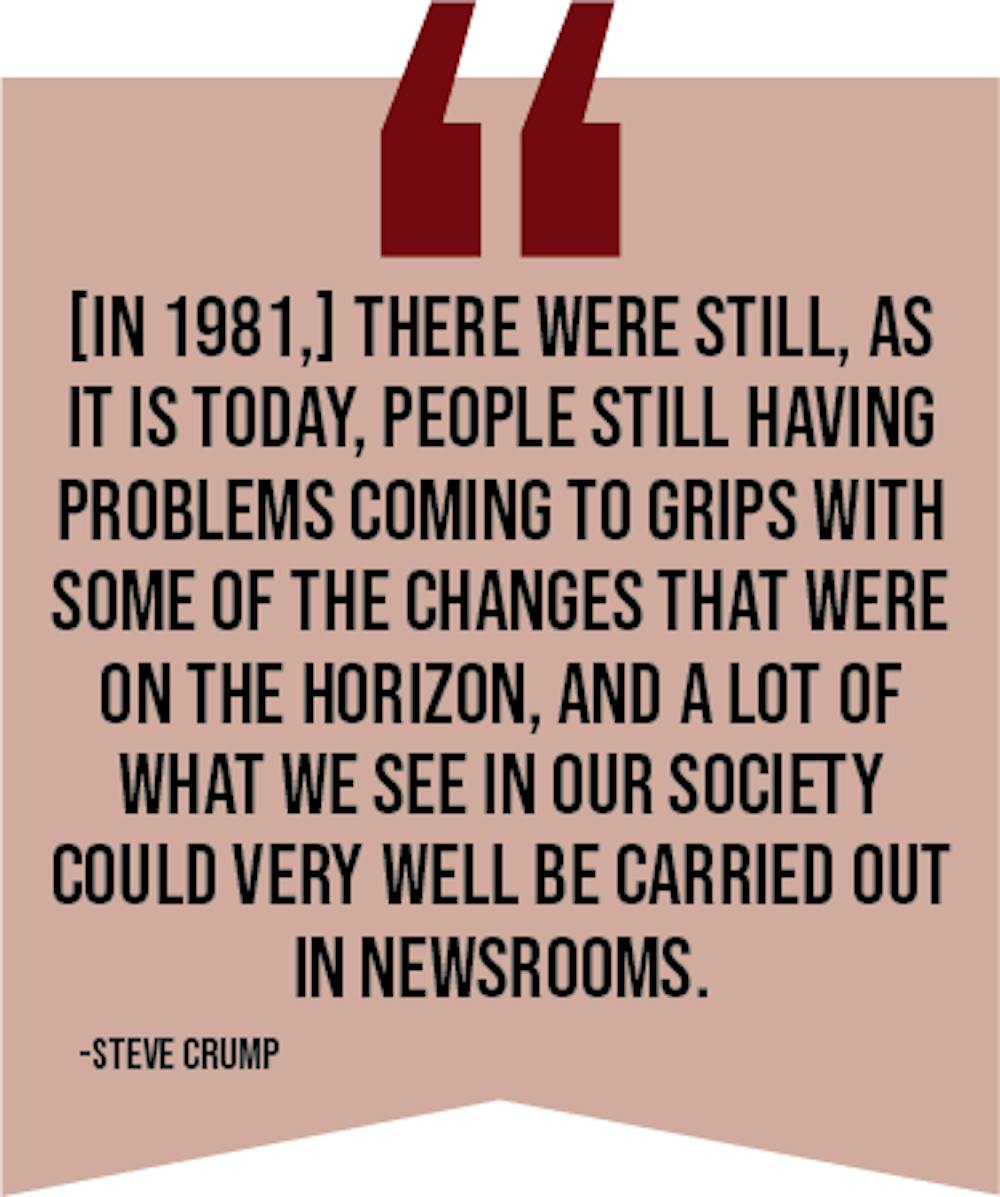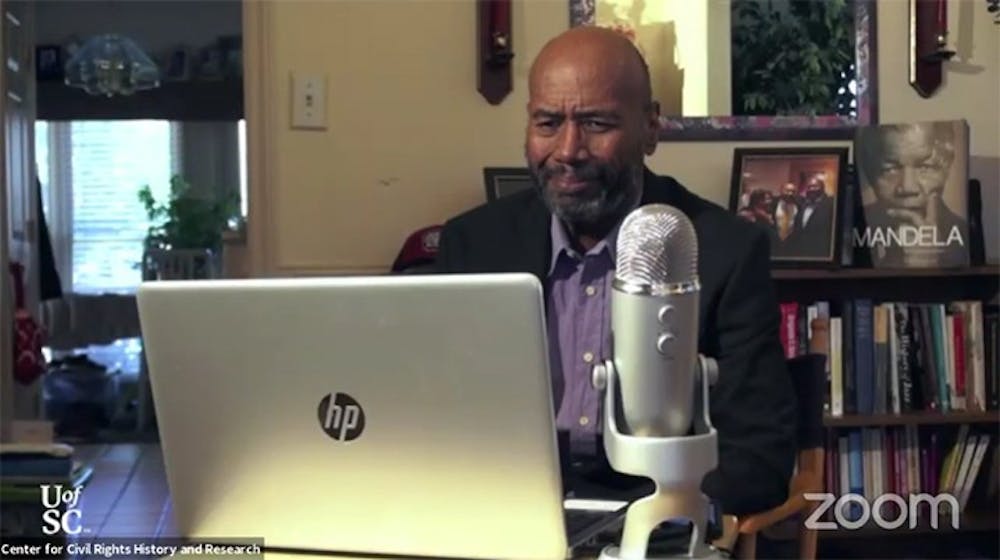In a webinar on Wednesday, Charlotte-based reporter and documentary filmmaker Steve Crump spoke about his over-40-year career in journalism, including his coverage of notable figures in the civil rights movements and his approach to race in the field.
The webinar followed the announcement that Crump and his wife, Cathy Wilson Crump, would be donating their papers and films to USC's Moving Image Research Collections. The Steve and Cathy Wilson Crump Collection include thousands of material hours, including footage, scripts and individual reporting.
"I have to credit Dr. Bobby Donaldson for reaching out to me to make [the donation] happen," Crump said. "And part of the credit, obviously, goes to my wife, Cathy, who is a Gamecock alum. I mean, she bleeds garnet, black and white."
The decision to donate this collection to USC was also made based on Crump's documentary coverage of South Carolina's role in the civil rights movement. Famous South Carolinian activists include Sarah Mae Flemming, a Black woman from Columbia who refused to give up her seat on a bus in 1954, over a year before Rosa Parks; and Rock Hill's "The Friendship 9," students who were arrested for staging a sit-in in 1961.
In his own life, while in Charleston covering the aftermath of Hurricane Matthew in 2016, Crump said he and a photographer were accosted by a man calling him a "slave" and other racial slurs.
"Did I want to get physical with him? Nah, not my style; not my speed. But I did not want to ignore it," Crump said. "The thing that was very insane about that was, how do you handle this? Hopefully with a moment of integrity, hopefully with some sensitivity, but at the same time, realize — and make this individual realize — that you're not going to be a pushover in that situation."
Despite the tense encounter, Crump said he regrets that he could not one day reach an understanding with the man, Brian Eybers. Eybers was arrested after Crump called police on him, and he died of a drug overdose shortly after he was charged in court.
"As a journalist, as a person, the endgame in that for me did not happen, and it was kind of disappointing," Crump said. "Because what I was hoping, was that Bryan Eybers and I would have gone to church together on a Sunday at Mother Emanuel to demonstrate the power of healing and the power of being somewhat progressive, in what was very, very much an uncomfortable situation."
The webinar addressed other racially-charged events in Crump's career, including the 2015 shooting at Mother Emanuel and the removal of the Confederate flag from the South Carolina Statehouse later that same year. During the webinar, Crump spoke with Judi Gatson, a WIS anchor and tenured news reporter who also covered these two events, on how they might be connected.
"I'm not sure that, if that had happened at any other church in South Carolina, that it would have resulted in the flag coming down," Gatson said. "I'm not sure if it had resulted in the death of any other pastor, it would have resulted in the flag coming down. I'm not sure if it had been any other member of the South Carolina legislature — it was almost as if Reverend [Clementa] Pinckney was just appointed and anointed for that moment in history, as tragic as it was."
Aside from his own coverage of issues affecting the Black community, Crump spoke on how being Black has affected his career in journalism. He graduated from college and entered the industry in 1980, only 12 years after the assassination of Martin Luther King, Jr. Working at a Savannah, Georgia, news station as the only Black on-air anchor at the time, he covered a Ku Klux Klan rally in the small town of Willacoochee in 1981.

Despite the risks, Crump said he considers it part of his job to try and understand the mindsets of the people he covers. He said he sees the news media as a way to document and bring about change.
"[In 1981,] there were still, as it is today, people still having problems coming to grips with some of the changes that were on the horizon, and a lot of what we see in our society could very well be carried out in newsrooms," Crump said. "I mean, newsrooms, in some regards, are microcosms of what it is we see in society."
The Steve and Cathy Wilson Crump collection will be available through University of South Carolina libraries.

